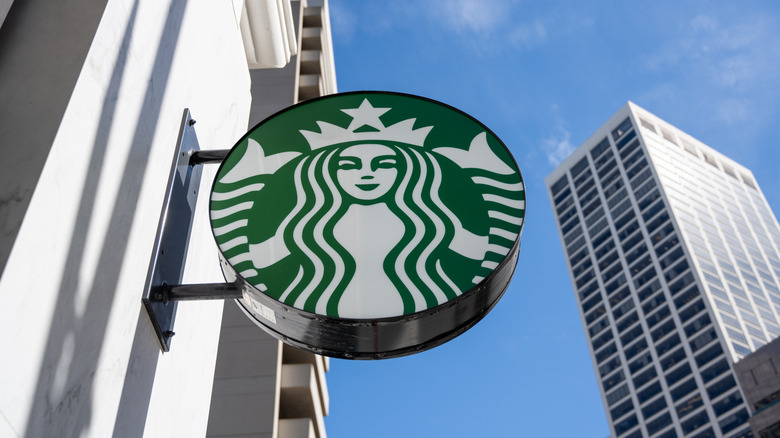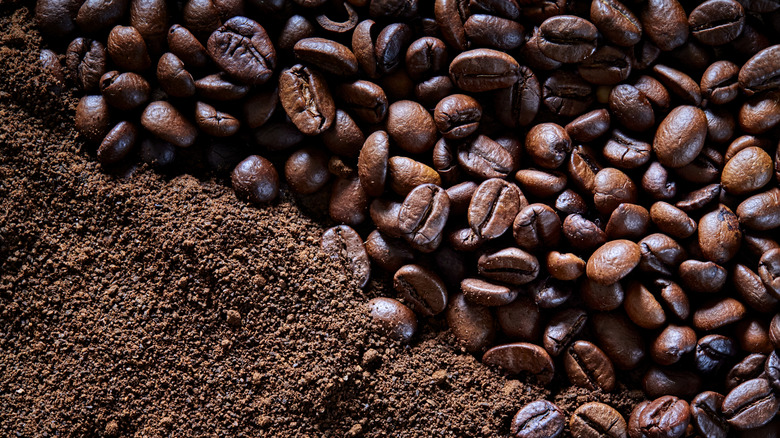Here's Where Starbucks Actually Gets Its Coffee Beans From
If you've ever wondered where Starbucks gets its coffee beans, the answer's pretty cool. It doesn't just grab them from one place; Parsing arabica from robusta, Starbucks buys 100% arabica beans from over 450,000 farmers in more than 30 countries around the world. These places make up what's called the "coffee belt," which stretches across parts of Latin America, Africa, and the Asia Pacific. That's where arabica coffee grows best because of the warm weather and rich soil.
Starbucks has a team in Switzerland that searches for the best beans all year long. These experts taste tons of different coffees and only pick the ones that meet the highest standards. Some of the biggest elements that they consider are where the beans grow, how the weather and soil affect them, and of course, the taste. If everything checks out, the company works directly with farmers to help improve sustainability and consistency, often through its Coffee and Farmer Equity (C.A.F.E.) Practices, which protect both the environment and those growing the crops.
How each coffee region affects the flavor
The region a coffee bean comes from plays a big part in how it tastes once it's brewed. That's why Starbucks leans into sourcing from three distinct parts of the world. Latin American beans often bring in hints of chocolate and nuts. They're a bit more balanced and familiar, which is why you'll find them in a lot of Starbucks blends. African coffees are usually more citrusy or floral. These beans are known for their brightness and are sometimes used in lighter roasts. They're also often the reason why Starbucks Reserve tastes different from the regular stuff. Beans from Asia Pacific, on the other hand, tend to be earthier or have herbal tones. They're less sweet, often deeper in flavor, and bring a lot of complexity to a darker roast.
By combining beans from different places or highlighting single-origin batches, Starbucks builds unique flavor profiles that stand out. Though seasonal drinks are typically a result of customer preferences and limited edition flavors, it's not uncommon for variations in coffee beans to inspire a particular flavor. Crop conditions can shift because of weather, so the company adapts its sourcing to maintain consistency. That's part of why Starbucks maintains such close relationships with its suppliers. It's not just about buying beans, but also about building a product that reflects both quality and predictability.
The long road from crop to cup
Even after Starbucks sources its beans, there's still a lot of work left to do before they end up in your cup. After harvesting, the beans are processed and then roasted in one of Starbucks' dedicated facilities. Each bean type has its own ideal roast profile, and Starbucks is known for leveraging this to control flavor across its global menu. During roasting, the coffee's natural oils develop and its body, acidity, and aroma starts to shine. From there, the roasted beans are packed and shipped to stores all over the world.
Distribution is also a tight operation. Starbucks has systems in place to make sure beans stay fresh and are delivered quickly. The company uses this approach to maintain consistency from store to store. Whether you're getting a coffee in Seattle or Singapore, the process behind that bag of beans is nearly the same. The company also utilizes Reserve Roasteries for smaller batches of rare or unique beans, where the process is even more focused. Those beans might come from a single farm or an unusually small harvest.
At every point along the way, there's a system meant to preserve quality. From sourcing to roasting to serving up our year-round Starbucks iced coffee habit, the chain keeps a close eye on how coffee beans move through its supply chain. That's what helps the brand deliver a predictable product even when its beans are grown thousands of miles apart.


